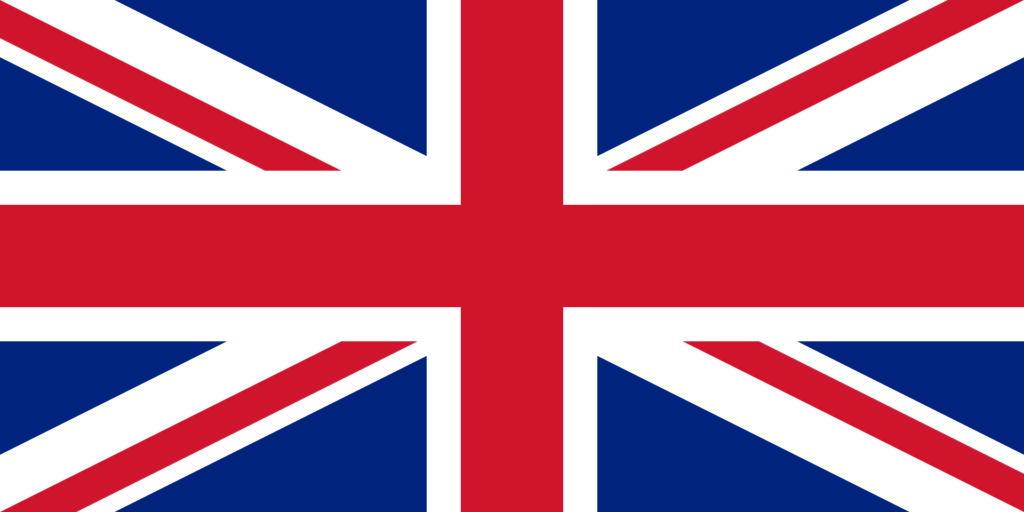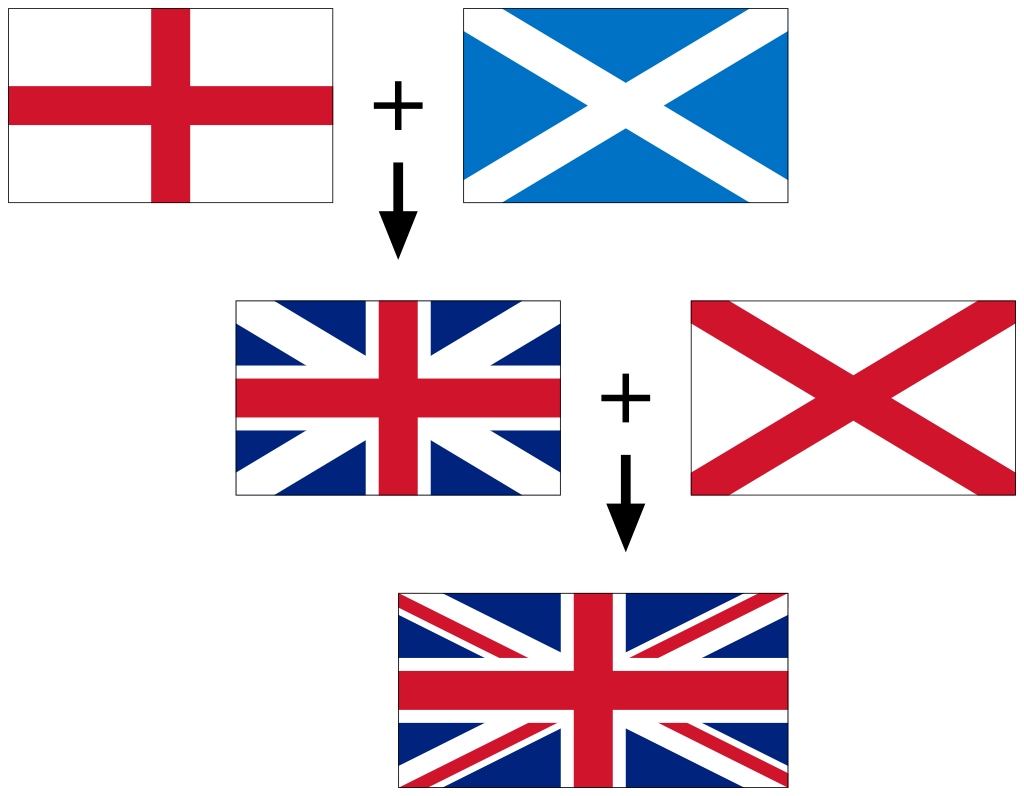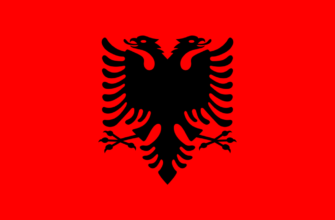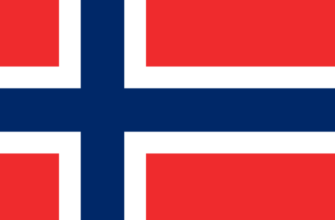Rather recognizable national symbol of the United Kingdom of Great Britain and Northern Ireland has a rather interesting history and no less interesting meaning.
This is what the modern flag of Great Britain looks like:

History
The history of the flag of Great Britain begins with the ascension to the English throne of the Scottish King James VI in 1603. He ruled England under the name of James I.
The design of the flag, which would symbolize the union of the two states, was approved on April 12, 1606 and was a combination of the flags of both countries: over the Scottish symbol of St. Andrew was superimposed the English symbol in the form of the cross of St. George.


-

The first flag of the English Commonwealth in 1649-1651 -

Second flag of the English Commonwealth in 1651-1658 -

Standard of Oliver Cromwell in 1653-1659 -

Second flag of the Commonwealth of England, Scotland and Ireland from 1658 to 1660
The flag was used mainly on merchant and military ships, but since May 5, 1634 it began to be placed only on the bow of warships. From this came its name «Union Jack», where Jack in translation from English means «bow flag of a warship».
The word «Union», began to be used as a designation for the British flag in 1625, later merged with the word «Jack».
As a result of the Act of Union in 1707, both states were united into a single kingdom of Great Britain, and as a result the joining flags of the two countries became the symbol of the new state.
In 1801 the Act of Accession of Ireland to Great Britain was passed, as a result of which its emblem was also added to the already existing type of flag. This is how the flag has survived to the present day.
Description
The cloth, combining the flags of the three states, has an aspect ratio of 1 to 2 for the state authorities and 3 to 5 for the army and navy. On a blue background is a red straight cross with a white border, superimposed over diagonal red and white crosses.
The diagonal red cross is slightly off to the side. This positioning of the symbol of St. Patrick relative to the sign of St. Andrew deprives the flag of symmetry. The offset is made to ensure that neither of the diagonal crosses occupies the dominant position.
The design was not changed after the independence of Ireland in the 20th century for the reason that Northern Ireland remained part of Great Britain, the symbolism of which also includes the cross of St. Patrick.

Colors on the flag
Each color present on the flag of Great Britain contains certain meanings and meanings:
- white — represents peace and honesty;
- Red — represents fortitude, courage, strength, and bravery;
- Blue — means truth and loyalty, as well as steadfastness and justice.
Meaning of Symbolism
The flag of Great Britain symbolizes the union of different regions, different from each other:
- straight red cross — the emblem of the Christian great martyr George, who patronizes England;
- diagonal white cross on a blue background — the symbol of Scotland, embodying the crucifixion of the Apostle Andrew. This sign connects the Constantinople and Orthodox churches;
- The diagonal red cross is the sign of St. Patrick, the patron saint of Ireland. However, many historians still cannot agree on its origin, and some Irish nationalists do not recognize it at all. Also, according to Catholic Church law, St. Patrick is not entitled to his own cross because he is not a martyr.
The absence of the Welsh symbol is perceived as discrimination and is the reason for periodic calls for a change of design and the addition of a red dragon.
For a long time, the flag of Great Britain has been the most recognizable symbol, carrying the meaning of the unity of different states.
Other flags:
-

Army flag -

Flag of government courts -

Royal Navy flag -

Royal Air Force flag -

Civil aviation flag -

Flag of civil vessels
General information about the UK
| Official language | English |
| Capital | London |
| Territory | 243 809 km2 |
| Population | 66 273 576 |
| Currency | Pound Sterling |
| Phone Code | +44 |










I still remember when I visited London and saw the British flag waving proudly at Buckingham Palace. It made me feel so connected to the history and culture of the UK. Grateful for that experience, it was truly a moment I’ll cherish forever!
I remember when I visited London and saw the British flag flying high at Buckingham Palace. It felt so iconic! I even bought a mini one as a souvenir. Grateful for that unforgettable trip and all the memories tied to the flag. Can’t wait to go back!
As a Brit, seeing our flag always fills me with pride. Once, during a rugby match abroad, spotting the flag in a crowd made me feel instantly at home. Grateful for how it connects us all, no matter where we are. Cheers to the Union Jack!